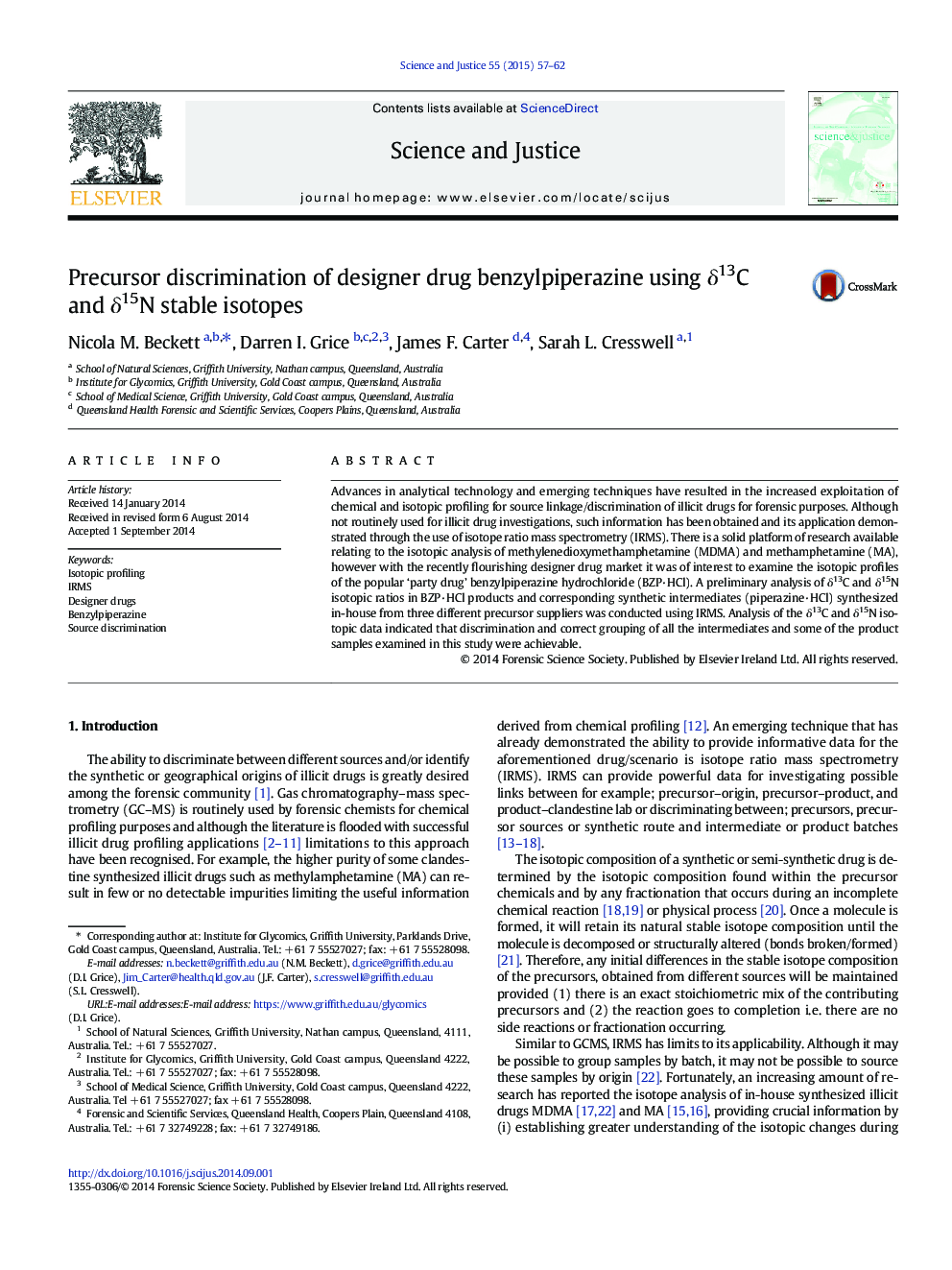| Article ID | Journal | Published Year | Pages | File Type |
|---|---|---|---|---|
| 106969 | Science & Justice | 2015 | 6 Pages |
•A clandestine method for the synthesis of BZP·HCl was replicated for investigation into IRMS analysis.•Isotopic compositions of BZP·HCl and intermediate compounds synthesized from various precursor sources was determined.•δ13C and δ15N stable isotope analysis discriminated the intermediate samples according to the precursor sources.•Statistical analysis revealed discrimination of some of the BZP·HCl products based on their source.•The authors discuss possible scenarios to account for the isotopic data.
Advances in analytical technology and emerging techniques have resulted in the increased exploitation of chemical and isotopic profiling for source linkage/discrimination of illicit drugs for forensic purposes. Although not routinely used for illicit drug investigations, such information has been obtained and its application demonstrated through the use of isotope ratio mass spectrometry (IRMS). There is a solid platform of research available relating to the isotopic analysis of methylenedioxymethamphetamine (MDMA) and methamphetamine (MA), however with the recently flourishing designer drug market it was of interest to examine the isotopic profiles of the popular ‘party drug’ benzylpiperazine hydrochloride (BZP·HCl). A preliminary analysis of δ13C and δ15N isotopic ratios in BZP·HCl products and corresponding synthetic intermediates (piperazine·HCl) synthesized in-house from three different precursor suppliers was conducted using IRMS. Analysis of the δ13C and δ15N isotopic data indicated that discrimination and correct grouping of all the intermediates and some of the product samples examined in this study were achievable.
